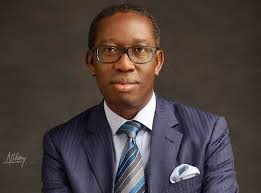A bridge in the heart of Genoa collapsed on Tuesday, killing 37 people as dozens of vehicles and tons of concrete and steel plunged onto city streets below in a disaster that prompted an emergency review of Italy’s aging infrastructure.
Adriano Scimpioni said he had just finished his shift at the city’s garbage collection company when “I heard something like an explosion and a screech of iron, and in a second we were all covered by a cloud of dust.”
Mr. Scimpioni went outside, and with his smartphone he started broadcasting the scene on Facebook.
“I immediately thought of the victims; I held my tears, with difficulty,” he said. “We were impotent, we didn’t have the means to help those who remained underneath.” He said two of his colleagues had been killed.


The highway bridge fell by as much as 148 feet just before noon, taking about three dozen cars and three trucks with it, according to Angelo Borrelli, chief of the Civil Protection Department.
The calamity presented a serious test of Italy’s new government, a coalition of populist parties that was formed only months ago. They rode to power on a wave of anti-establishment anger, but the coalition is led by people who had little to no experience governing, and now must demonstrate that they can manage a crisis and the scrutiny that comes with it.
Giuseppe Conte, who took over as prime minister in June, traveled to the scene of the disaster. The office of the city’s public prosecutor said it would open a criminal inquiry, examining whether the collapse was because of negligence, and federal authorities indicated that they too would investigate.
Mr. Conte’s deputy prime minister and interior minister, Matteo Salvini, who is a powerful populist skeptic of the European Union, said that the bloc’s budget rules might have to be lifted so Italy could overhaul its infrastructure. “When they tell us that we can’t spend our money because some E.U. constraints don’t permit it, I wonder whether these constraints make any sense,” he said.
Danilo Toninelli, the transportation minister, said the government had ordered a comprehensive safety review of Italy’s infrastructure — including viaducts and bridges built in the 1950s and 1960s during the country’s postwar boom. Much of the infrastructure, he warned, was showing signs of age. “This is what Italy needs to do, now,” he said.
In a phone interview, Antonio Occhiuzzi, director of the Institute for Construction Technology for Italy’s National Research Council, said that most of the nation’s infrastructure “needs to be carefully re-examined” because much “was at the end” of its useful life span. He added, “In some cases it can be reinforced, in other cases it will have to be demolished and rebuilt completely.”
Mr. Occhiuzzi said that civil and structural engineering projects in Italy were complicated by a national patrimony that dates to antiquity. “Our position, typically, is to try and conserve rather than demolish and rebuild, as happens in other countries,” he said.
The collapse of the Genoese bridge was a serious alarm, he said, “because it is not an isolated case — in the last three years, a number of bridges have collapsed in Italy, and they are all around 50 years old.”
Francesco Faccini, a lecturer at the University of Genoa and an expert on floods and landslides, said “significant urbanization” of the city’s flood plains along with, at times, irrational urbanization, led to channels being narrowed and streams diverted. The result, he said, was a situation where flooding became more common, especially as the intensity of downpours has grown in recent years.
In the Sampierdarena neighborhood under the fallen bridge, gas and electricity were shut off as workers scrambled to check on the security of buildings. The electricity was later restored.
Giovanna Santacroce, a 25-year-old ice cream vendor who lives a few hundred yards from the bridge, said she heard what sounded like thunder. “Then the light went off for a second and I peeked out of the window and couldn’t see the bridge anymore,” she said. “On the street people were crying, debris was everywhere. They ordered us to leave the house, and we don’t know when we’ll be able to return.”
Pietro Marzullo, a 31-year-old elder care attendant who was driving in the area when the disaster occurred, said he helped a woman in shock get away moments later. “Small concrete blocks were scattered everywhere, rolling down the street and around us,” he said.
The national police noted that there was a “violent cloudburst” about the time the section fell, and some witnesses said the bridge was struck by lightning just before it collapsed, though it was not clear whether the storm contributed to the failure.
Edoardo Rixi, the deputy transportation minister, said that the bridge had shown some “signs of problems” in the past. “A bridge like that doesn’t collapse because of a lightning bolt, or a storm,” he said. “Those who are responsible must be found.”
Mr. Rixi said the entire bridge would be demolished, “with serious repercussions on traffic, and problems for citizens and companies.”




